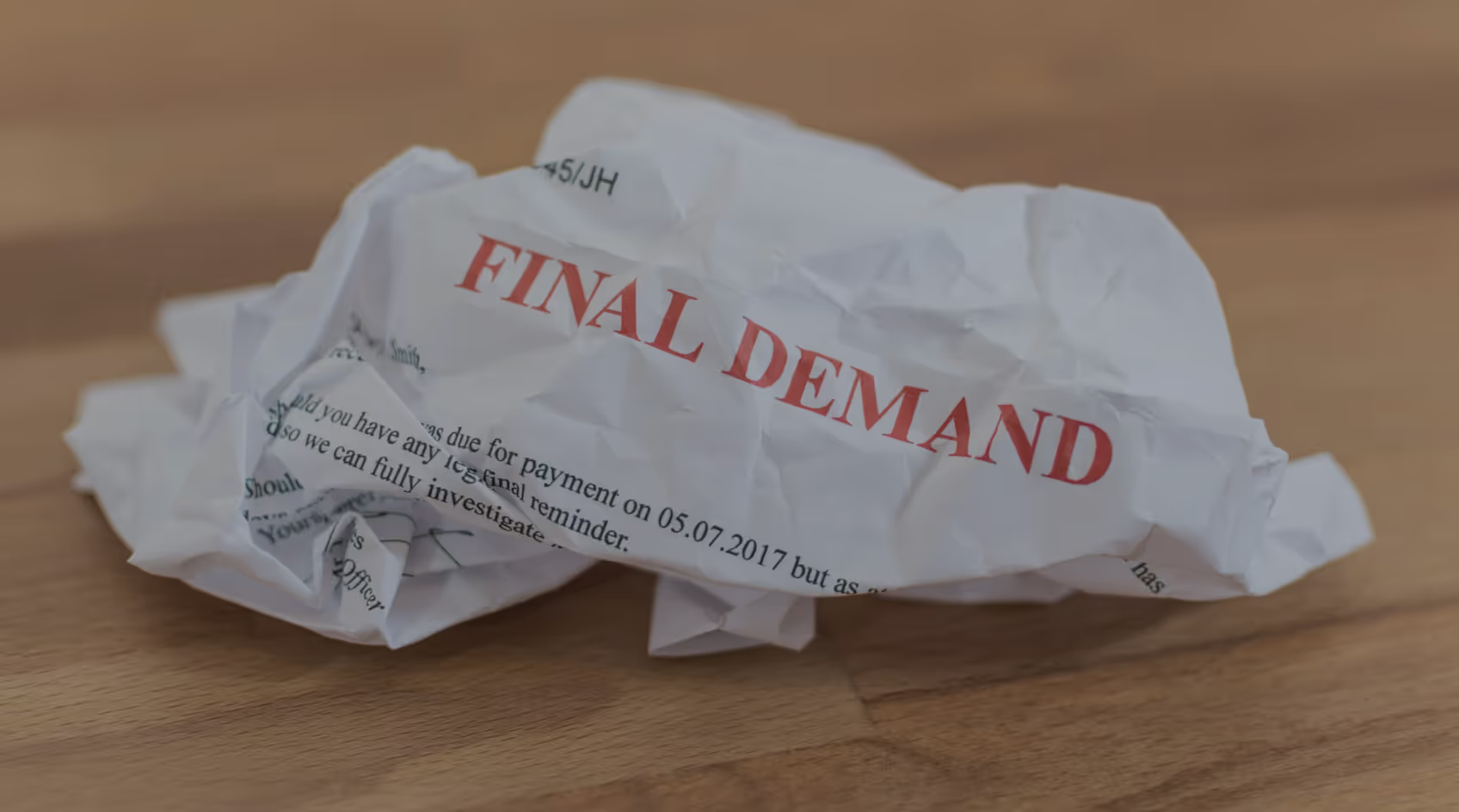A demand letter is a formal document that tells someone you expect a certain action—usually to make things right. Maybe they owe you money, maybe they damaged your property, or maybe they just didn’t hold up their end of a deal. Whatever the situation, this letter is often the first step toward resolution. It says, in writing: here’s what happened, here’s what I want, and here’s what happens if you don’t respond.
Think of it like drawing a line in the sand—but doing so politely and professionally. Most importantly, a demand letter sets the stage for the settlement negotiation process to begin. Whether you’re trying to avoid court or build a case, this document lays a strong foundation.
People use demand letters in many situations. In personal injury claims, they help outline injuries, bills, and what compensation is fair. In business, they’re used to collect unpaid invoices. And in everyday disputes—landlord issues, car repairs, contracts—they act as a clear first move.
If writing one feels intimidating, you’re not alone. That’s why some people choose to work with a Virtual Demand Writer. Our VAs are trained to draft effective, legally sound letters that communicate your position with clarity.
Common Situations That Call for a Demand Letter
Demand letters aren’t just for lawyers. They’re used in day-to-day conflicts where communication has broken down or actions need to be taken. Here are some of the most common situations:
- Personal Injury Claims: After an accident, injured individuals often use a demand letter to request compensation for medical bills, lost wages, and pain.
- Unpaid Debts: Whether a friend didn’t pay you back or a client didn’t pay their invoice, this letter is the first step to resolve the issue.
- Contract Disputes: If the other side broke a written agreement, you can send a letter demanding compliance or compensation.
- Property Damage or Loss: If someone damaged your belongings or caused a financial loss, you can ask them to make it right.
- Small Business Issues: Vendors not delivering, late payments, or partnership breakdowns can all lead to sending a formal demand.
In all these cases, the letter works as a formal document and a paper trail. It proves you made a good faith effort to resolve the matter before taking legal action. It also lets the other side know that this isn’t just another phone call—they need to take it seriously.
Legal Considerations Before You Send a Demand Letter
Before you put pen to paper (or fingers to keyboard), it’s worth pausing to think through the legal side of things. A demand letter may feel informal, but it can become part of the record in a legal case. Here’s what to keep in mind:
- Stick to the facts. Avoid exaggerations or emotional language.
- Support your claims. Include documents, receipts, or other proof.
- State your demand clearly. Don’t leave room for confusion.
- Stay professional. Aggressive or threatening language can backfire.
- Send it the right way. Certified mail with return receipt requested is best. It shows the letter was delivered and read.
If you're not sure how to structure it or which laws to reference, Legal Soft’s virtual demand writers are trained to handle that part. They understand what makes a letter effective and how to keep it professional without sounding robotic.
How to Write a Demand Letter That Gets Results
You don’t have to be a lawyer to write a strong demand letter. But you do have to be clear, specific, and polite. Here’s a structure that works:
- Start with your info. Your name, address, phone number, and email.
- Include the recipient’s info. Their full name and mailing address.
- Open clearly. Mention that this is a formal demand letter.
- Describe the situation. What happened, when, and who was involved.
- State your demand. What do you want done? Be specific. (e.g., “$1,200 payment by August 15, 2025.”)
- Reference your legal basis. Contracts, laws, or common agreements help add weight.
- Mention what happens next. Let them know you may pursue legal action.
- Set a deadline. A specific date shows you’re serious.
- Close respectfully. Keep the tone civil, not confrontational.
Sending the letter by certified mail with return receipt requested proves you sent it and that they got it. This step can be especially important if you end up in small claims court.
Sending a Demand Letter: What to Expect from the Other Side
Once your letter lands in the recipient’s hands, a few things can happen:
- They agree to your terms and respond positively.
- They counter with a different offer.
- They ask for more time or documentation.
- They ignore the letter completely.
- They hire an attorney and reply formally.
No matter the reaction, you’ve made your move. You’ve shown you’re serious. A well-written demand letter is hard to ignore—and sometimes that alone can motivate action, especially if the other side has been dodging phone calls or avoiding emails.
Even if they don’t respond, you’ve laid the groundwork for taking legal action. You can show the court you tried to resolve things in good faith.
Taking Legal Action If There’s No Response
Let’s say you gave them time. You sent the letter. No response. What now?
You might consider:
- Filing a claim in small claims court.
- Hiring an attorney to begin a civil lawsuit.
- Sending a second letter, this time through legal representation.
Here’s where your earlier letter shines. That certified mail receipt, the deadline, and your clear request all show the court you weren’t rash—you gave the other side a chance.
Personal Injury and Demand Letters: A Vital First Step
In personal injury cases, a demand letter isn’t just a good idea—it’s often the first major step. Whether it’s a car accident, a slip and fall, or a dog bite, a strong letter can set the tone for the entire claims process.
These letters usually include:
- A summary of the incident
- The party’s conduct or negligence
- Medical bills and supporting documentation
- Your expected compensation
This is the moment where the settlement negotiation process begins. Insurance companies especially take notice when they receive a well-organized, reasonable letter. It tells them you’re ready to negotiate—but you’re also ready to escalate.
Our virtual demand writers are trained to help with these specific cases. They know how to structure letters around medical evidence, timelines, and injury claims without sounding cold or overly technical.
Why a Demand Letter Still Matters—Even If It Doesn’t Work
Sometimes the other party won’t respond. Or they’ll refuse. But that doesn’t mean your effort was wasted.
- It documents the timeline of your dispute.
- It supports your claims in court.
- It shows you tried to resolve the issue outside of litigation.
- It helps your attorney (or the judge) understand what’s at stake.
Even if you’re unsure of what to say or how to phrase it, sending the letter gives you a solid foundation. A Virtual Demand Writer from Legal Soft can help ensure that everything is in place—facts, tone, language, and legal backing.
How Our Virtual Demand Writers Make It Easier
Let’s be honest: writing a legal letter doesn’t sound like anyone’s idea of a fun afternoon. And it’s easy to overthink what to say or worry about getting it wrong.
That’s where Legal Soft steps in. Our virtual demand writers:
- Understand legal language but speak like real people.
- Write clearly and professionally—no confusing jargon.
- Tailor each letter to your situation and your tone.
- Work under attorney guidance to ensure accuracy.
Whether you’re chasing an overdue invoice or recovering from a car accident, our writers help you create a letter that feels human—but still gets taken seriously.
Final Thoughts: A Simple Letter That Can Change Everything
A demand letter might seem small—but it often leads to big changes. It shows the other side you’re serious. It gives them a chance to resolve things before court. And it documents everything for the record.
Whether you’re doing it yourself or getting help from a professional, the key is to stay calm, stay clear, and stay on message. If you’d rather not draft the letter alone, our Virtual Demand Writers at Legal Soft are ready to help you create a demand that stands up—and gets results.
Taking the first step doesn’t have to feel overwhelming. It just has to be the right one.








